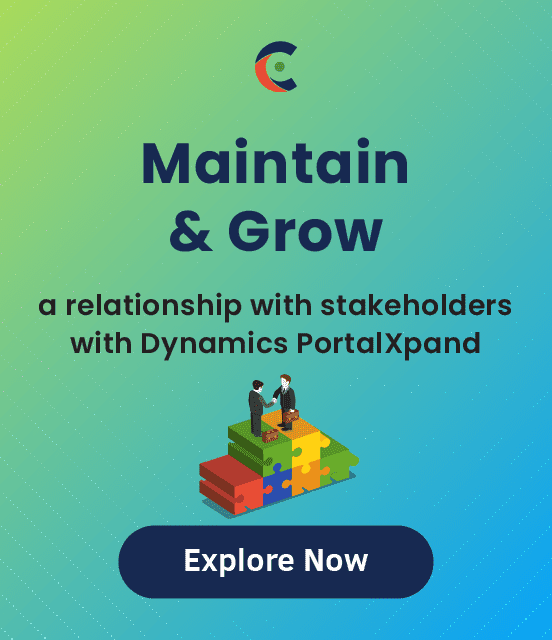In today’s digital age, mobile devices have become integral to our lives. They provide convenience and accessibility, allowing us to access information and services on the go. As a result, businesses and organizations increasingly focus on providing mobile-friendly experiences to their users. However, when it comes to PowerApps portals, certain limitations can hinder the mobile user experience. This article will explore these limitations and discuss strategies to optimize the portal experience for mobile users.
PowerApps portals, formerly Dynamics 365 portals, offer a way to build external-facing websites that users outside an organization can access. These portals allow businesses to extend their internal systems and processes to external audiences, such as customers, partners, and suppliers. While PowerApps portals provide a range of features and customization options, there are specific challenges when it comes to mobile access.
Part 1: Limitations in Mobile Access to PowerApps Portals
PowerApps portals offer a versatile platform for creating external-facing websites, but certain limitations can hinder the user experience when it comes to mobile access. Understanding these limitations is crucial for businesses and organizations seeking to optimize their portal experience for mobile users. Let’s explore some of the key limitations:
- Responsive Design: One of the primary challenges is the lack of responsive design. PowerApps portals are primarily designed for desktop interactions, which means they may adapt poorly to different screen sizes and resolutions. Without responsive design, the portal’s layout may appear distorted or challenging to navigate on mobile devices.
- Touch-Friendly Interface: Mobile devices heavily rely on touch-based interactions, while PowerApps portals are primarily optimized for desktop interactions. This disparity can make it difficult for mobile users to navigate and interact with the portal’s content. The absence of touch-friendly interfaces can lead to a frustrating user experience on mobile devices.
- Performance Optimization: Mobile devices often have limited processing power and are, therefore, slower than desktop computers. This can result in slower loading times and reduced performance when accessing PowerApps portals on mobile devices. Slow loading times can negatively impact user experience and discourage users from engaging with the portal.
- Content Prioritization: Mobile screens have limited real estate, and displaying all the information from a PowerApps portal can be overwhelming and challenging to navigate. Mobile users may struggle to find the most critical information and features without proper content prioritization, leading to a disjointed user experience.
Part 2: Optimizing the Portal Experience for Mobile Users
To overcome the limitations in mobile access to PowerApps portals, businesses, and organizations can implement strategies to optimize the portal experience for mobile users. Here are some effective approaches:
- Responsive Design: Implement responsive design principles to ensure the portal layout adapts to different screen sizes and resolutions. This involves designing flexible layouts, using fluid grids, and employing media queries to adjust the styling based on the device’s screen size. Responsive design ensures a consistent and visually appealing experience across various mobile devices.
- Touch-Friendly Interface: Optimize the portal’s interface for touch-based interactions. Increase the size of buttons and links to accommodate finger taps, implement swipe gestures for navigation, and ensure that pinch-to-zoom functionality is supported for images and other visual content. These touch-friendly enhancements improve usability and make navigation intuitive for mobile users.
- Performance Optimization: Prioritize performance optimization to minimize loading times and improve the overall performance of the PowerApps portal on mobile devices. Techniques such as minimizing HTTP requests, compressing and caching static assets, optimizing image sizes, and implementing lazy loading for content below the fold can significantly enhance the portal’s performance on mobile devices.
- Content Prioritization: Streamline the content displayed on the PowerApps portal for mobile users. Identify the most critical information and features and make them easily accessible. Utilize collapsible sections, accordions, or tabs to hide secondary content, providing a focused and user-friendly experience on mobile devices. Prioritizing content ensures that mobile users can quickly find what they need without feeling overwhelmed.
- Testing and User Feedback: Test the PowerApps portal extensively on various mobile devices to identify any usability issues, layout inconsistencies, or performance bottlenecks specific to mobile access. Additionally, gather user feedback to gain valuable insights into how mobile users perceive and interact with the portal. Incorporate testing and user feedback into the optimization process to fine-tune the portal experience for mobile users.
Businesses and organizations can create a seamless and user-friendly PowerApps portal experience for mobile users by addressing the limitations and implementing these optimization strategies. Optimizing the portal for mobile access enhances user satisfaction and extends the reach and accessibility of the portal in an increasingly mobile-centric world.
About CRMJetty
We are a portal solution company with over 8 years of experience making portals for various industries. Alongside that, we also provide CRM services for Dynamics 365 and Salesforce. As a result of this experience, we made CRMJetty Portal, a Dynamics 365 Portal, which is mobile-friendly and feature-packed enough to stack up well against the competition.
All product and company names are trademarks™, registered® or copyright© trademarks of their respective holders. Use of them does not imply any affiliation with or endorsement by them.


